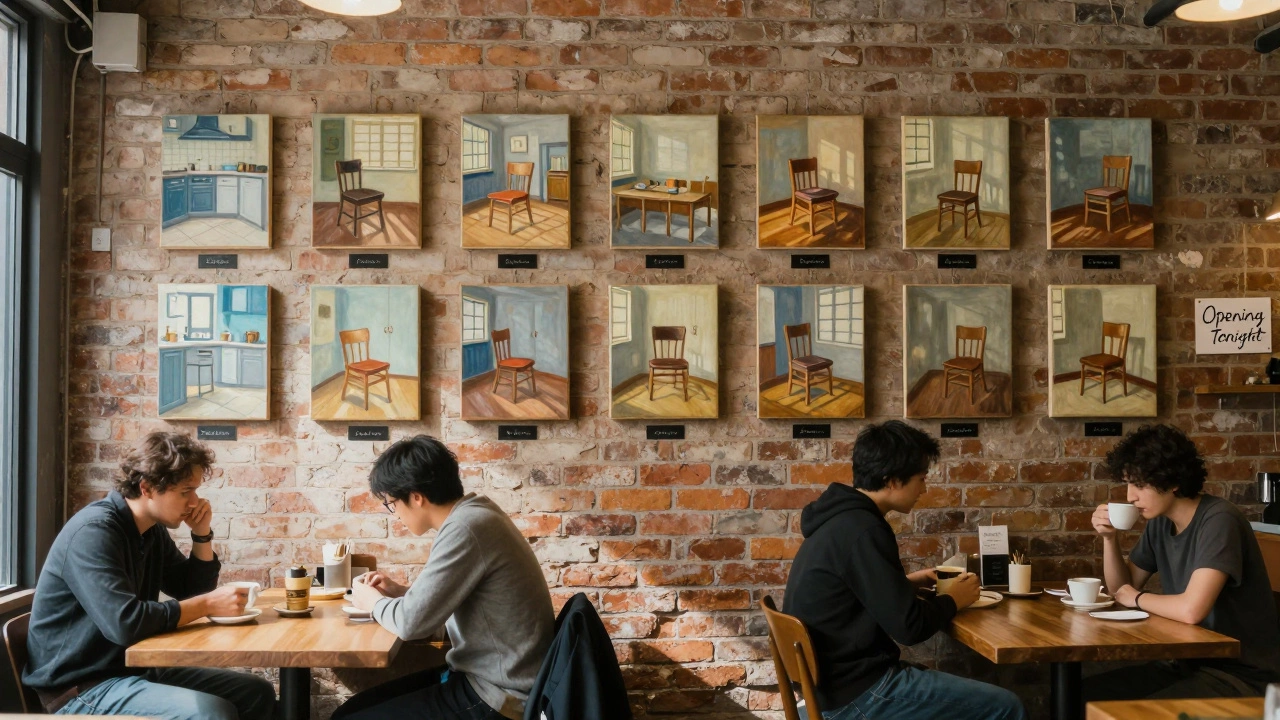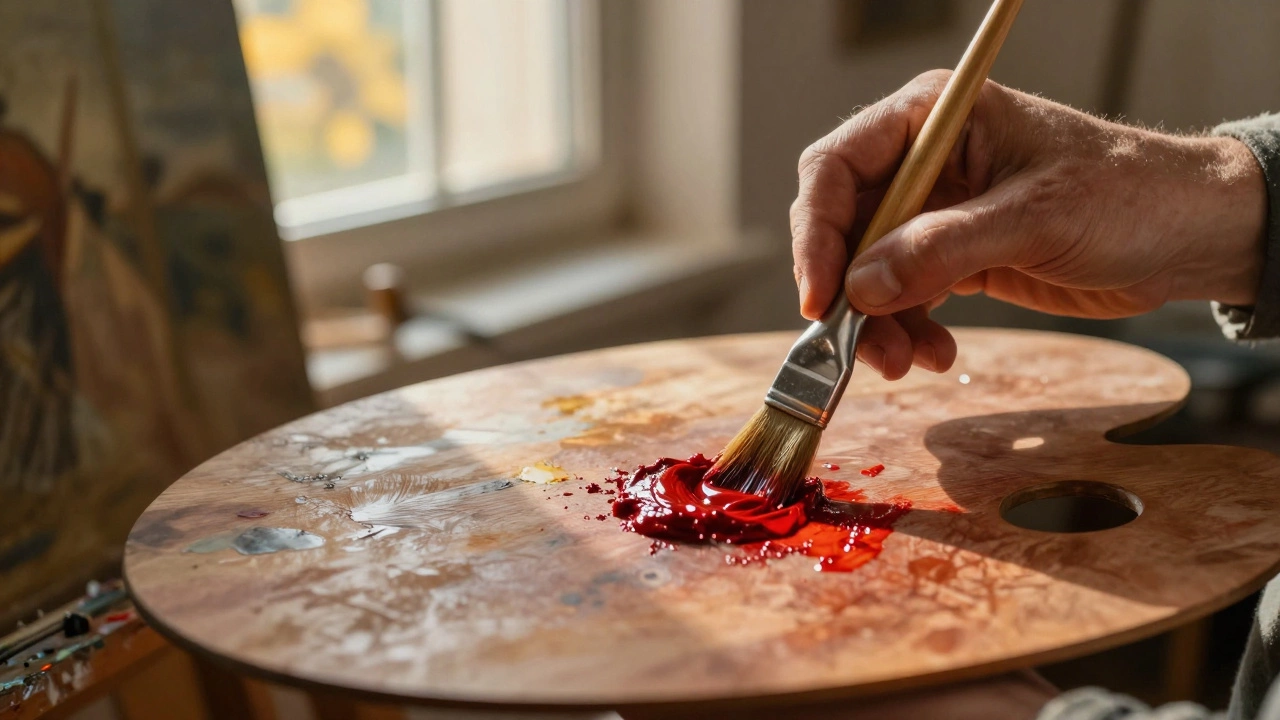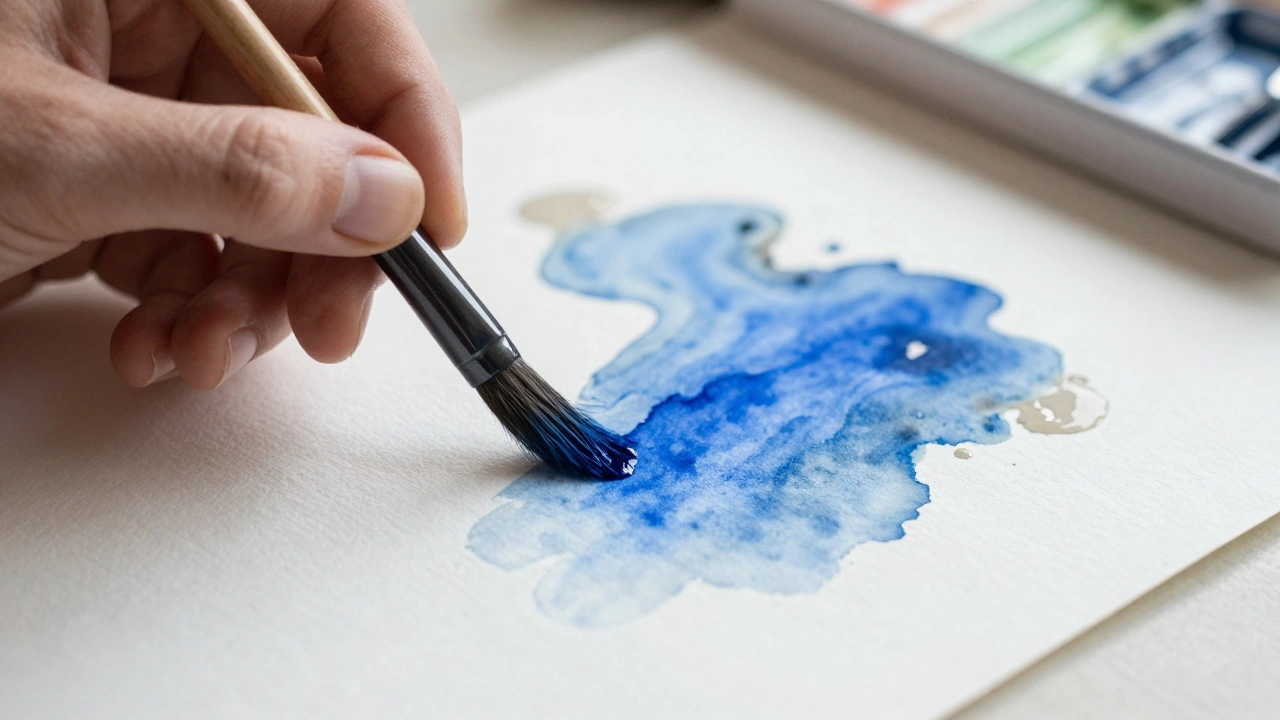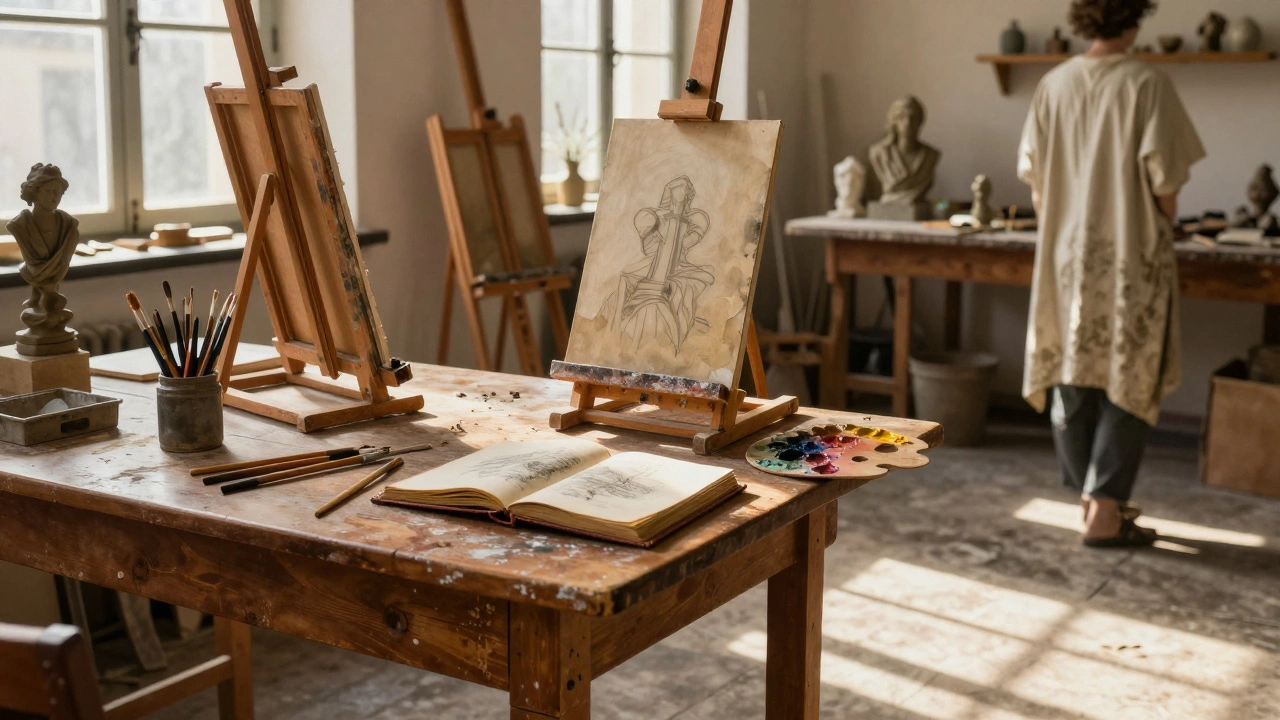Sculptures have been around for thousands of years, but do they count as artwork? When we think of art, paintings often steal the spotlight. Yet, sculptures hold a unique place in the creative world with their tangible and three-dimensional presence.
Whether it's the smooth marble curves of ancient statues or the striking forms of modern pieces, sculptures offer a whole new dimension to art. Unlike a painting, you can walk around a sculpture, experiencing different angles and details that bring it to life. This physical interaction with sculptures sets them apart from more conventional art forms.
Historically, sculptures have played vital roles in cultures worldwide. From towering statues that tell stories of gods and heroes to intricate carvings that celebrate local traditions, sculptures serve as physical records of human history and creativity. These pieces offer more than visual appeal; they capture the essence of the times and people who created them.
- The Essence of Sculpture Art
- Historical Significance of Sculptures
- Sculpture vs. Traditional Art Forms
- Types of Sculptures
- Fascinating Sculpture Techniques
- Tips for Appreciating Sculptures
The Essence of Sculpture Art
At its core, sculpture art is about creating forms that occupy space, offering a physicality that paintings can't quite match. Sculptures take art off the flat canvas, bringing it into the realm of the viewer. This tactile interaction is what makes sculptures so special and enduring.
Sculpture art is as old as human history itself. From the Venus of Willendorf, dating back over 25,000 years, to the modern abstractions of artists like Henry Moore, the evolution of sculpture shows the versatility and diversity of this art form. Sculptures have been used to commemorate events, pay homage to leaders, and express beliefs, making them integral to cultural heritage worldwide.
Materials and Techniques
Sculptures can be crafted from many materials, with stone, metal, clay, and wood being the most common. Each material brings its own set of challenges and possibilities. For instance, stone carving requires precision and foresight, as artists 'chip away' to reveal the form. In contrast, metalwork often involves adding and shaping—like in casting processes.
One interesting technique in sculpture art is lost-wax casting, which has been used for thousands of years. This method involves creating a wax model of the sculpture, which is then coated with a heat-resistant material to form a mold. When heated, the wax melts away, leaving a cavity that can be filled with molten metal, capturing intricate details with great precision.
| Material | Common Usage |
|---|---|
| Stone | Classical statues, monuments |
| Metal | Modern sculptures, functional art |
| Wood | Ethnic art, carved pieces |
| Clay | Modeling, pottery |
Modern Impact
Today, sculpture art continues to evolve with new materials and technologies. Artists use 3D printing to create intricate designs previously impossible by hand. This blend of innovation and tradition allows sculptors to push boundaries and explore new frontiers.
Understanding the significance of sculptures helps us appreciate the labor, creativity, and history behind each piece. Next time you see a sculpture—from ancient relics to contemporary art installations—take a moment to walk around it, view it from every angle, and imagine the hands that brought it to life.
Historical Significance of Sculptures
Sculptures have been pivotal in documenting human history and cultural shifts. They're not just sculpture art; they are storytellers of our past.
Ancient Roots
From the majestic pyramids of Egypt guarded by the Great Sphinx to Greece's legendary deities immortalized in marble, sculptures have been used to honor gods and leaders, displaying power and ambition. These ancient artifacts highlight civilizations' values and technologies. For example, the intricate details on the ancient Greek sculptures show a keen understanding of human anatomy, leaving us in awe of their craftsmanship.
Religious Symbolism
Throughout history, many cultures used sculptures to represent religious beliefs. In the Buddhist tradition, statues of Buddha convey teachings and promote contemplation. Similarly, cathedrals throughout Europe are adorned with religious figures and elaborate sculptures, aiming to connect the earthly to the divine.
Public Memorials
As we move into more recent history, sculptures continued to play a role in commemorating events and individuals. The Statue of Liberty, a gift from France to the United States in 1886, stands as a symbol of freedom and democracy. War memorials worldwide use sculptures to honor fallen soldiers, providing a place for remembrance and reflection.
Modern Sculpture Movements
In the 20th century, the perception of sculptures evolved through art movements like Modernism and Cubism, challenging traditional forms and styles. Artists like Pablo Picasso and Henry Moore introduced abstract forms, pushing boundaries and encouraging the public to think deeply about form and space.
Thanks to these historical shifts, sculpture remains a vital part of cultural expression, reflecting where humanity has been and where it's headed.
Sculpture vs. Traditional Art Forms
When it comes to comparing sculpture art with traditional art forms like painting or drawing, there are some distinct differences that make sculptures stand out. First off, the most obvious distinction is the dimensionality. Paintings and drawings are two-dimensional; they're flat, hanging on walls to be viewed from a single perspective. Sculptures, on the other hand, are three-dimensional, demanding interaction from the viewer as you can physically walk around them, seeing new details from every angle.
Another notable difference is the medium itself. Traditional art forms typically use materials like canvas and paper, coupled with paints, inks, or pencils. But sculptures are crafted from a wide variety of materials. Common choices include clay, marble, metal, and even modern elements like glass or found objects. This opens up a world of creative possibilities, allowing artists to push boundaries and experiment with form and texture.
The Process
Creating a painting is a matter of applying pigment to a surface, but sculpting goes further, involving techniques that are uniquely its own. Artists may carve, mold, or assemble pieces from various parts, a process that can be both physically demanding and time-consuming. Interestingly, sculpting often demands a lot of planning and precision—once you remove a piece of marble or clay, there's no putting it back!
Interactivity and Experience
With sculpture art, the viewer experience is interactive and immersive. Unlike a museum wall where artworks are viewed in passing, sculptures command presence. Public sculptures have been known to transform spaces, enticing audiences to stop, ponder, and engage.
Integration with the Environment
One unique aspect of sculptures is their ability to integrate effectively into different environments. A sculpture can become a central focal point in a garden, a park, or even in an urban setting, influencing its surrounding space. Their versatility and three-dimensional nature mean they don't just hang on walls; they live in spaces, encouraging viewers to interact with their environment.
Did you know? Michelangelo's David, one of the most famous sculptures, weighs over six tons, and yet it was transported across Florence to its final location back in 1504. This feat alone highlights another facet of sculpture art—the logistics of installation often require as much ingenuity as the creative process itself!

Types of Sculptures
When we dive into the world of sculpture art, it's like opening a treasure chest of diversity and creativity. There's more to it than the traditional figures we see in museums.
Free-Standing Sculptures
Known as sculptures in the round, these are designed to be viewed from all angles. Think of iconic pieces like Michelangelo's David. These 3D art forms invite viewers to walk around and experience them from different perspectives.
Reliefs
Reliefs are a bit different. They stick out from a flat background, offering a unique blend between two-dimensional and three-dimensional art. You'll find them on buildings or as decorative pieces, telling stories through their intricate carvings.
Assemblage
This type takes everyday objects and transforms them into art. Using items like wood, metal, and found objects, assemblage sculptures push creative boundaries. It's like making a collage but in 3D.
- Low Relief: Projects slightly from the background, like ancient coin designs.
- High Relief: Stands out more dramatically, almost appearing detached from the background.
Installation Sculptures
These immersive creations often take up entire rooms. They can be interactive, encouraging viewers to engage physically with the design. Installations challenge the way we perceive space and art, merging the environment with the artwork.
Kinetic Sculptures
These sculptures move, incorporating elements like wind or motors. Artists use these dynamics to bring their creations to life, offering a constantly shifting visual experience.
Sculptural Technology
Innovative artists are now using technology to make sculptures that light up or even change shape. This tech-driven approach adds a futuristic dimension to traditional sculpture techniques.
The key takeaway is that sculptures are not constrained by one definition. They vary widely, driven by culture, history, and the individual artist's vision. Understanding these types can deepen appreciation for this versatile art form.
Fascinating Sculpture Techniques
Diving into the world of sculpture art opens up a treasure trove of techniques that artists use to create their masterpieces. From ancient methods to modern inventions, the variety is as diverse as the sculptures themselves.
Carving: The Age-Old Tradition
Carving is possibly the most recognized technique in sculptures. This method has been around since ancient times, where artists chisel away at materials like stone, wood, or ivory to reveal detailed forms. The iconic sculptures of Michelangelo, like David, are prime examples of how impactful carving can be.
Modeling: Shaping the Future
Unlike carving, which is subtractive, modeling is an additive process. Artists build up their work with clay, wax, or plaster. This technique allows more flexibility, making it popular in creating prototypes or for expressions in modern 3D art.
Casting: Making Multiples
Casting uses molds to create multiple copies of a sculpture. This technique is essential in materials like bronze, where molten metal is poured into a mold. Many classical statues we see today are actually casts of ancient originals, ensuring their preservation through time.
Assemblage: A Modern Twist
Assemblage involves piecing together various objects and materials to form a sculpture. It's a more contemporary approach, often used to make social or political statements. The flexibility of this technique mirrors the dynamic and ever-changing world of modern art.
Stats on Popular Techniques
| Technique | Popularity |
|---|---|
| Carving | 45% |
| Modeling | 30% |
| Casting | 15% |
| Assemblage | 10% |
These techniques not only create stunning artwork but also highlight the creativity and ingenuity of artists throughout history. Whether you're an aspiring sculptor or an art enthusiast, understanding these methods can deepen your appreciation for this tactile art form.
Tips for Appreciating Sculptures
Understanding and appreciating sculpture art can be a rewarding experience if you know where to start. Here are some tips to enhance your appreciation for these three-dimensional artworks.
Look from Different Angles
Unlike paintings, sculptures are meant to be viewed from multiple perspectives. Walk around the piece, and you'll notice how shifting angles can change the perception of the artwork. This tactile exploration brings out nuances that one-sided views can't capture.
Understand the Material
Materials used in sculptures often dictate the artwork's form and texture. From marble and bronze to clay and recycled materials, each medium offers a different feel. Learning a bit about these materials can deepen your understanding of the artist's intentions.
Research the Background
Every sculpture has a story. Whether it relates to the artist's personal experiences, historical events, or cultural ethos, understanding these backgrounds adds value to what you're viewing. A quick search or checking the museum's notes can provide this context.
Engage with the Details
Look for the minute details that might not be obvious at first glance. Artists often embed hidden elements or intricate designs that reward close inspection.
Visit with Others
Appreciating sculptures can be more engaging with company. Discussions can bring out different interpretations and add layers to your understanding—after all, art is subjective!
| Medium | Characteristics | Common Uses |
|---|---|---|
| Marble | Durable, Smooth Finish | Classical Sculptures |
| Bronze | Rich Colors, Strength | Outdoor Monuments |
| Clay | Malleable, Versatile | Pottery and Small Figures |
Try these tips, and you'll find that appreciating sculptures is a richer experience. It might even inspire you to create some 3D art yourself!





